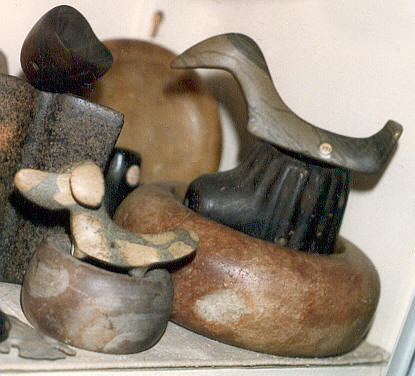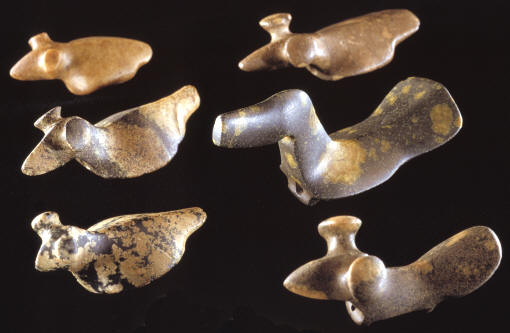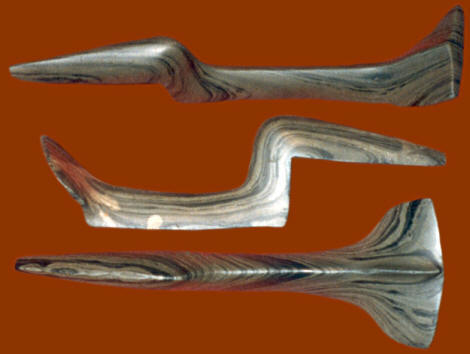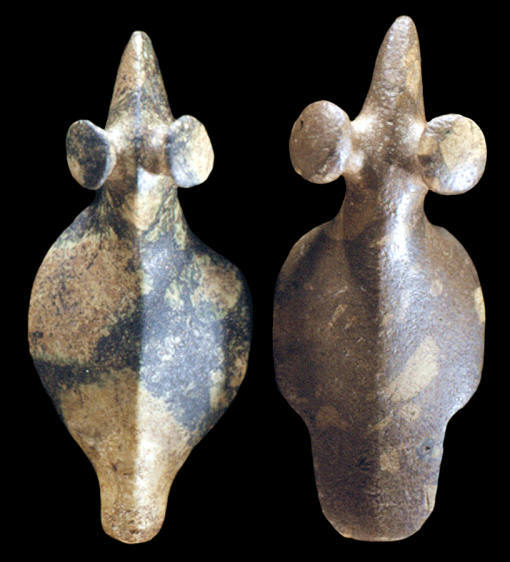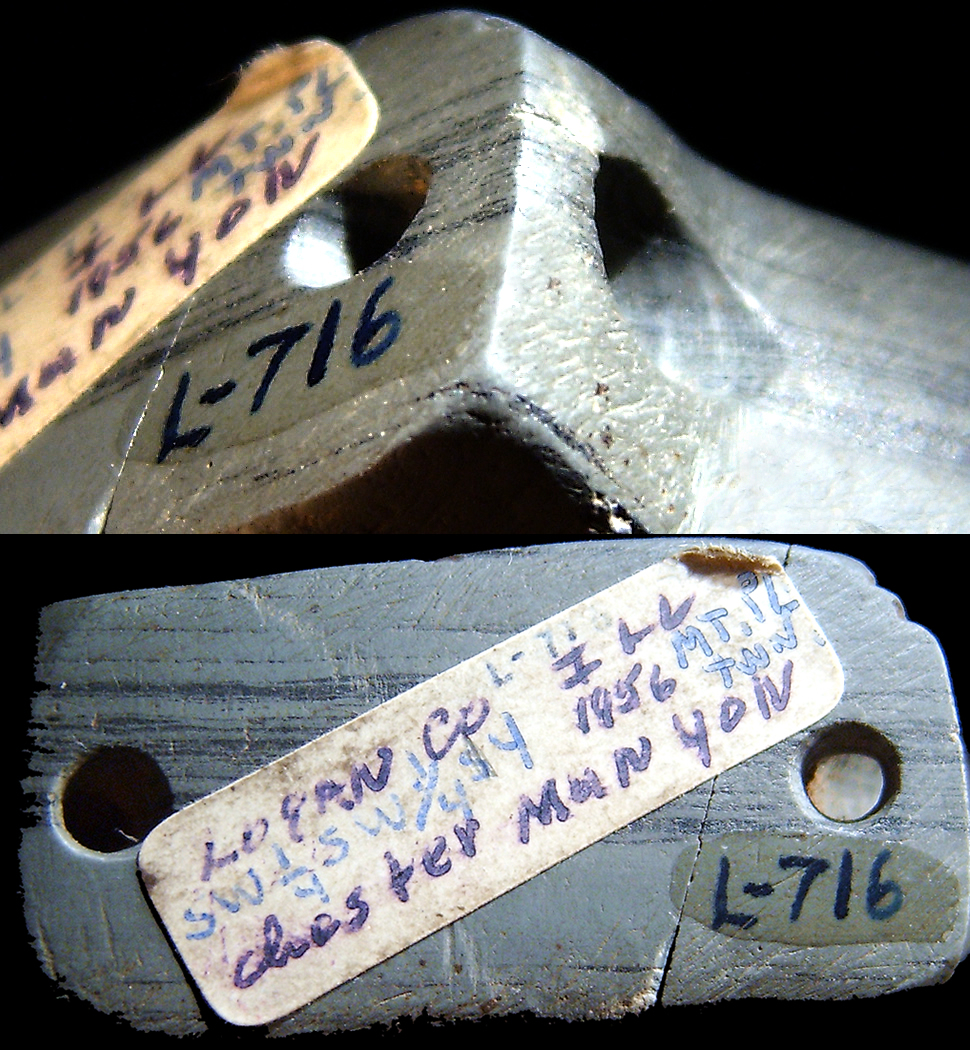|
|
|
Birdstones were made by first selecting an appropriate stone. Many of the slate birdstones, and other types, were probably made from water worn pebbles that would have required a minimum amount of work. Especially if the raw stone approximated the size of the intended finished item. The surface of the stone was first pecked into shape with a hammerstone. Next, heavy grinding would have been required to achieve the final shape. Chert flakes may also have been used to scrap the softer stone to shape difficult areas such as around delicate knobbed-eyes. The final process of polishing the surface would have been accomplished by using increasingly finer grit along with water and leather. The manufacturing process was not always successful. There have been some rejected examples of birdstones found that indicate they broke during manufacture. |
|
|
Birdstones were also drilled for attachment. Holes were placed on the bottom at the front and back edges. Most birdstones were drilled with stone bits with the use of quartzite grit and water. A tapered flint drill will cut a conical hole 1/2 inch (1.2 cm) deep in slate in about ten minutes. There is also evidence that show these holes were used for some type of significant attachment. Many birdstones have been found that have their holes broken away. So it's likely they were fastened to something more than feathers or small items as a fetish would be used. |
|
|
Birdstones range in size from 1 inch (2.5 cm) to 9 3/4 inches (24.8 cm) long, 3/16 (5 mm) to 4 inches (10.2 cm) wide and 3/4 inch (1.9 cm) to 4 inches (10.2 cm) high. Their weight ranges from 1/4 ounce to 2 pounds. |
|
|
|
|
The main theme of birdstones is of course birds which, for many cultures around the world, happens to be one of the most powerful talismans. It seems likely that there may have been some type of mythological understanding of the birdstone image by the people who were making them. The freedom and airy flight of birds have impressed humans for thousands of years. Their form has worked their way into endless legends and mythology. Many cultures, around the world, have recognized birds as the mechanism that transports or represents the human soul. They are also seen as communicators of knowledge and information between the earth and the spirit world. Shamans have used them as spirit helpers. The ancient Egyptian human headed bird ba carried the soul to the heavens, leaving the body behind. Owls are often associated with seers or people with second sight and serve them in the form of goddesses, female spirits, wise women, midwives and witches. The Yoruba in Africa especially value birds as having mystical powers in the form of female elders referred to as "our mothers." |
|
|
|
|
Throughout history, different kinds of birds are seen as having good or bad qualities. The ancient Egyptian swift (memet) rode the sun god's ship as it passed each day through the underworld. They also recognized the goose, hawk and heron as representing the human soul. The hawk/falcon headed god Horus was originally seen as a sky/solar god then later became a protector of the pharaohs. Horus's eyes were the sun and the moon and his speckled plumage represented the starry sky. The goddess Nekhbet is represented by a vulture which is the bird of death. Owls are linked with the moon, death, magic and dreams. In some cultures, the falcon was seen as a warrior. |
|
|
|
|
It's a good bet that no one will ever know for certain how or even if the Late Archaic and Early Woodland people viewed birdstones as having a mystical or mythological value. All that anyone can hope for now is to discover how they may have been physically used and to acquire more datable finds. So, in some ways, birdstones will remain mysterious---for a very very long time. |
|
|
"REFERENCES"
1848, Squier, E. G. & Davis, E. H., "Ornaments Of Stone, Bone, Etc.,"
Ancient Monuments Of The Mississippi Valley, p. 239. |
|
